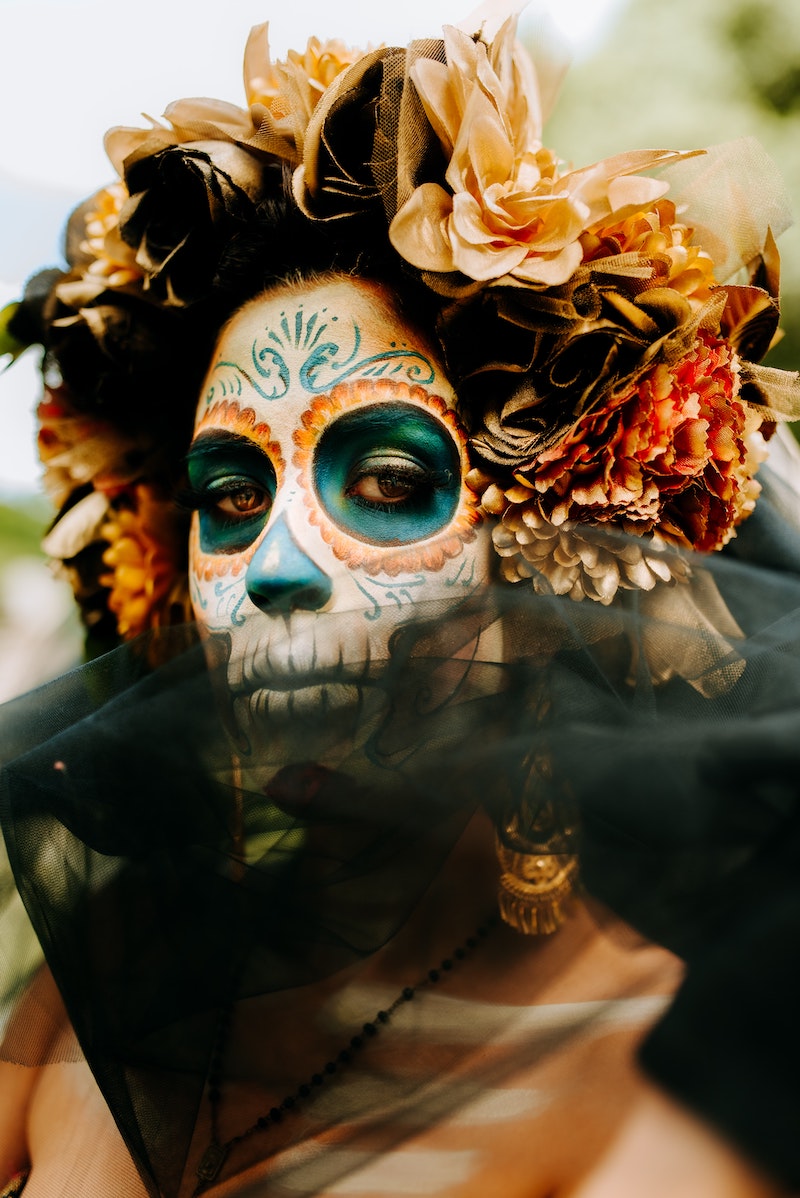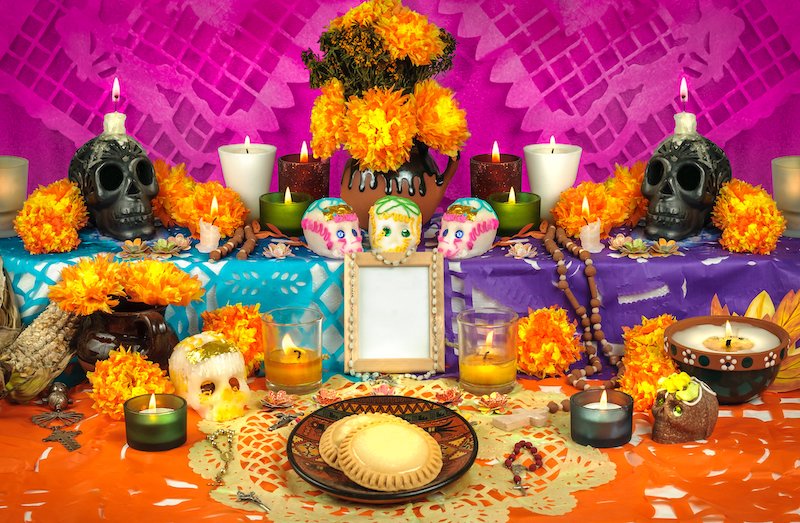
Day of the Dead: A Festivity Full of Life
You have probably heard of “Día de Muertos” or Day of the Dead, a Mexican festivity celebrated on November 1st and 2nd, but what does this celebration represent and why is it so important?
The meaning behind Día de Muertos
Even when Day of the Dead has some similarities with Halloween, as the Celts believed that on the night of October 31st the boundary between the worlds of the living and the dead became blurred and the ghosts of the dead returned to earth, the Mexican celebration
The joyful Mexican spirit is present even when remembering our deceased dear ones: catrinas’ faces painted with artful designs, customs, parades, music, chants, dance, food, drinks
The festivity takes place on November 1st, “Día de Todos
On the Day of the Dead, we welcome the dead who awaken from their eternal sleep to celebrate with their loved ones for one day.
Popular symbols
As it happens with everything revolving around Mexican traditions, there is a wide symbology intertwined with Día de Muertos, and here we enlist some of the most representative:
Altar

The centerpiece of the celebration is an altar, or
Literary calaveras

Calaveras or (skulls) are short, humorous poems, often describing sarcastic tombstone epitaphs or events. Their origin dates back to
Sugar or chocolate calaveras

Skulls are added to represent the
Catrina

These elegantly dressed skeletons with artful paintings on the face have their origin in 1910, when Mexican illustrator, Jose Guadalupe Posada created la Catrina as part of his series of satirical lithographs that addressed political and societal issues which were published for the masses in the Mexican press. Later in the 1940s, Mexican painter Diego Rivera represented this icon in one of his murals. At some point, people started dressing like her and painting their faces on Día de Muertos. Nowadays Catrinas
Candles

These elegantly dressed skeletons with artful paintings on the face have their origin in 1910, when Mexican illustrator, Jose Guadalupe Posada created la Catrina as part of his series of satirical lithographs that addressed political and societal issues which were published for the masses in the Mexican press. Later in the 1940s, Mexican painter Diego Rivera represented this icon in one of his murals. At some point, people started dressing like her and painting their faces on Día de Muertos. Nowadays Catrinas
Marigold flower

This beautiful flower with its yellow and orange petals was believed by ancient Mexican cultures to keep the heat of the sun and bring shelter to the dead.
Copal Incense

It is added to clear away any negative energy or bad spirits and purifies the area around the altar.
Pan de muerto

Bread of the dead or Pan de
Papel Picado or paper crafts

These colorful paper sheets decorated with death motifs are draped around altars to represent the union between life and death.
Thanks to efforts held by UNESCO, the term “cultural heritage” is not limited to monuments and collections of objects. It also includes living expressions of culture, traditions, and so in 2008, UNESCO recognized the importance of Day of the Dead by adding the holiday to its list of Intangible Cultural Heritage of Humanity.
As you can see, Day of the Dead celebrates the joy of welcoming back our dear ones, but it is also a reaffirmation of life!
Feliz Día de Muertos!
Latest Posts
A Dream Destination for Newlyweds
Cabo’s unique geographical location, where the Pacific Ocean meets the Sea of Cortez, creates a nutrient-rich environment that attracts these magnificent creatures. Anglers can expect to encounter blue, striped, and black marlin, each renowned for their size and fighting prowess—making every fishing excursion a thrilling adventure.
Cabo After Dark
Cabo’s unique geographical location, where the Pacific Ocean meets the Sea of Cortez, creates a nutrient-rich environment that attracts these magnificent creatures. Anglers can expect to encounter blue, striped, and black marlin, each renowned for their size and fighting prowess—making every fishing excursion a thrilling adventure.
The Ultimate Guide to a Cabo Wedding
Cabo’s unique geographical location, where the Pacific Ocean meets the Sea of Cortez, creates a nutrient-rich environment that attracts these magnificent creatures. Anglers can expect to encounter blue, striped, and black marlin, each renowned for their size and fighting prowess—making every fishing excursion a thrilling adventure.
![]()

